
|

 Another very common conception of technology, including information technology is founded in modernism: the notion that computers and machines used in nursing practice are simply tools that nurses control within their practice. This reflection is very common in the nursing literature, usually embedded within an organizational culture or management framework, to support the use of technologies in a utilitarian manner. “Technology is conceived as socially, culturally, and morally neutral – is conceived as amoral (amoral in the sense of having no value of moral consideration) – is nothing more than a resource to be used by nurses” (Barnard, 1997, p. 127). Supporters of this perspective question why information technology is not used more in nursing since it is, after all, a benign tool that can make nursing work easier, less redundant and repetitive, and more congruent with contemporary trends. “Nursing remains under the ever-pressing demand to do more with less. Yet, our profession only sparingly implements incredible technological advances that have streamlined other industries. Why haven't we capitalized on these phenomenal resources?” (Bartholomew & Curtis, 2004, p. 48).
Another very common conception of technology, including information technology is founded in modernism: the notion that computers and machines used in nursing practice are simply tools that nurses control within their practice. This reflection is very common in the nursing literature, usually embedded within an organizational culture or management framework, to support the use of technologies in a utilitarian manner. “Technology is conceived as socially, culturally, and morally neutral – is conceived as amoral (amoral in the sense of having no value of moral consideration) – is nothing more than a resource to be used by nurses” (Barnard, 1997, p. 127). Supporters of this perspective question why information technology is not used more in nursing since it is, after all, a benign tool that can make nursing work easier, less redundant and repetitive, and more congruent with contemporary trends. “Nursing remains under the ever-pressing demand to do more with less. Yet, our profession only sparingly implements incredible technological advances that have streamlined other industries. Why haven't we capitalized on these phenomenal resources?” (Bartholomew & Curtis, 2004, p. 48).
Deterministic Domination
 This utility-focused view of informatics and technology in nursing can be seen as a deterministic, decidedly neutral (at least on the surface) lens to view the applications of computers and ICTs within the context of nursing care. “Nurses in all specialties are required to care for patients and develop the technical knowledge not only to manipulate machinery but interpret the world around them. Overall, the literature remains deterministic (both utopian and dystopian) and favors an uncritical approach to technology in which the phenomenon is understood to be little more than machinery and tools. Determinism seeks to explain phenomena in terms of one principle or determining factor” (Barnard, 1997, p. 126). This utility-focused view of informatics and technology in nursing can be seen as a deterministic, decidedly neutral (at least on the surface) lens to view the applications of computers and ICTs within the context of nursing care. “Nurses in all specialties are required to care for patients and develop the technical knowledge not only to manipulate machinery but interpret the world around them. Overall, the literature remains deterministic (both utopian and dystopian) and favors an uncritical approach to technology in which the phenomenon is understood to be little more than machinery and tools. Determinism seeks to explain phenomena in terms of one principle or determining factor” (Barnard, 1997, p. 126).
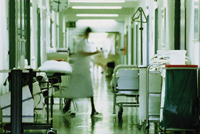 “One belief influencing the reason why nurses uncritically accept and interpret technology centers on the notion that technology is a neutral object – a view that machines do not make decisions, they only solve problems” (Barnard, 1997, p. 127). This belief in technology's neutrality emphasizes the premise of human control over machines and apparatus that are simply responsive to the manipulation, preferences, decisions, and direction of the people who use them. “One belief influencing the reason why nurses uncritically accept and interpret technology centers on the notion that technology is a neutral object – a view that machines do not make decisions, they only solve problems” (Barnard, 1997, p. 127). This belief in technology's neutrality emphasizes the premise of human control over machines and apparatus that are simply responsive to the manipulation, preferences, decisions, and direction of the people who use them.
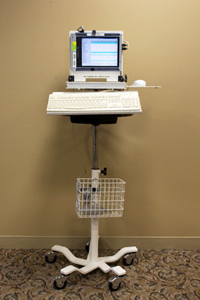 This view of nursing as master over technology is not a new one: it emerged as a result of the nineteenth century dominant sociological paradigm of the human right to dominate and master nature, and what humans fashion from nature, to meet their own needs and rationale. The key actions within this perspective are domination and mastery: in this case, reflected as nurses dominating and mastering information technology, and technology in general. “The neutral belief suggests there is nothing intrinsic to technology or the circumstances of its emergence which predetermines how it is used and controlled, or how the effects of technology will manifest upon individuals, groups, or the political forms around us” (Barnard, 1997, p. 127). This view of nursing as master over technology is not a new one: it emerged as a result of the nineteenth century dominant sociological paradigm of the human right to dominate and master nature, and what humans fashion from nature, to meet their own needs and rationale. The key actions within this perspective are domination and mastery: in this case, reflected as nurses dominating and mastering information technology, and technology in general. “The neutral belief suggests there is nothing intrinsic to technology or the circumstances of its emergence which predetermines how it is used and controlled, or how the effects of technology will manifest upon individuals, groups, or the political forms around us” (Barnard, 1997, p. 127).
The modernist literature does acknowledge that in order for nurses to masterfully utilize information technology at the bedside or in the community care setting, nurses must have the dexterity, competency and knowledge to seamlessly incorporate the computer or other apparatus into their care. 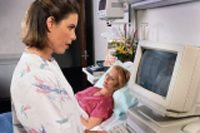 This notion supports the need for “high touch” nursing care combined with “high tech” abilities in order to demonstrate true caring to their clients. But this utility-based perspective downplays the influence of the technology on both nurses and clients, promoting the view that this is machinery after all – sophisticated perhaps, but nevertheless, mere tools that can support nurses in giving optimal nursing care within the confines of the bureaucratic health system (Locsin, 1999). “Nurses are characterized as capable of transcending bias, politics, economics, disinterest, and even disenfranchisement, to influence adequately the use of technology” (Barnard, 1997, p. 128). This notion supports the need for “high touch” nursing care combined with “high tech” abilities in order to demonstrate true caring to their clients. But this utility-based perspective downplays the influence of the technology on both nurses and clients, promoting the view that this is machinery after all – sophisticated perhaps, but nevertheless, mere tools that can support nurses in giving optimal nursing care within the confines of the bureaucratic health system (Locsin, 1999). “Nurses are characterized as capable of transcending bias, politics, economics, disinterest, and even disenfranchisement, to influence adequately the use of technology” (Barnard, 1997, p. 128).
Records and Visibility
 One of the most common arguments to support this perspective of utility, is the positive effect that information technology has on nurses' ability to attend to documentation in a more timely and less redundant manner. Nursing and hospital information systems are promoted as benign, efficient software that can save time, repetitive charting, and make the nurses' documentation easily available to physicians, other nurses, and the entire interdisciplinary team at One of the most common arguments to support this perspective of utility, is the positive effect that information technology has on nurses' ability to attend to documentation in a more timely and less redundant manner. Nursing and hospital information systems are promoted as benign, efficient software that can save time, repetitive charting, and make the nurses' documentation easily available to physicians, other nurses, and the entire interdisciplinary team at the click of a button. “Studies estimate that nurses spend as little as 15 percent of their time on direct patient care. As much as half goes to documentation. One welcome outcome expected of the many IT initiatives under way is revitalization and redefinition of the role of nurses and the nursing practice. Clinical documentation is an area where IT can have a major influence. As they help coordinate all the multifaceted activities related to patients, nurses must ensure that every aspect of diagnosis and care is carefully documented. the click of a button. “Studies estimate that nurses spend as little as 15 percent of their time on direct patient care. As much as half goes to documentation. One welcome outcome expected of the many IT initiatives under way is revitalization and redefinition of the role of nurses and the nursing practice. Clinical documentation is an area where IT can have a major influence. As they help coordinate all the multifaceted activities related to patients, nurses must ensure that every aspect of diagnosis and care is carefully documented.  Documentation poses a tremendous, often unmanageable, challenge and has become the root cause of many patient safety and other problems” (Ball, 2005, p. 1). It is obvious that nurses spend a lot of time recording their observations and other measured data – and that this data is critical to the smooth functioning of the modernist health care system (Jiang, Chen & Chen, 2004). Yet, despite the surface presentation of this benign technology as tool, it is also obvious that nurses must adhere to very structured guidelines in order to enter and analyze the inputted data perfectly, without error. Documentation poses a tremendous, often unmanageable, challenge and has become the root cause of many patient safety and other problems” (Ball, 2005, p. 1). It is obvious that nurses spend a lot of time recording their observations and other measured data – and that this data is critical to the smooth functioning of the modernist health care system (Jiang, Chen & Chen, 2004). Yet, despite the surface presentation of this benign technology as tool, it is also obvious that nurses must adhere to very structured guidelines in order to enter and analyze the inputted data perfectly, without error.
Of course, this need for attentiveness and accurateness is not new to nursing: even hand scribbled notes that detail vital signs and other observations are expected to be flawless and one hundred percent accurate. Yet the idea that nurses exercise a sense of control and mastery as they effortlessly input all required data into the structured data fields of the  typical nursing information system does not seem very realistic. A tension arises, which can be perceived as ambiguity. “This ambiguity is... a key issue with regard to software development, since software is not just a tool, but a specific form of reality disclosure and transformation. The question is, then: what kind of reality are we constructing when we develop software, and what are the limits and chances of such a form of reality construction?” (Capurro, 1992, p. 3). typical nursing information system does not seem very realistic. A tension arises, which can be perceived as ambiguity. “This ambiguity is... a key issue with regard to software development, since software is not just a tool, but a specific form of reality disclosure and transformation. The question is, then: what kind of reality are we constructing when we develop software, and what are the limits and chances of such a form of reality construction?” (Capurro, 1992, p. 3).
Who or What is in Control?
 One question that arises is, do nurses control these benign information technology tools, or do the “tools” shape the activities, decisions, and attention of the nurses as users of technology? Much of the modernist literature encourages the tool myth by linking the effects of using information technology in nursing with both caring as previously mentioned, but also with safety and client support (Locsin, 1999; Simpson, 1994; Kling, 2000b; Smith, 2004). One question that arises is, do nurses control these benign information technology tools, or do the “tools” shape the activities, decisions, and attention of the nurses as users of technology? Much of the modernist literature encourages the tool myth by linking the effects of using information technology in nursing with both caring as previously mentioned, but also with safety and client support (Locsin, 1999; Simpson, 1994; Kling, 2000b; Smith, 2004).  Technology becomes an overarching symbol of the means (as a benign tool) to serve nursing's mandate to provide meaningful caring practice, to uphold the structure and schedule of the health organization, and to do so without error or negligence. “Technology, and the data it provides, can help nursing improve care in three ways: a) by counteracting human error, b) by improving human behavior, and c) by putting nurses where they can be most effective. Technology does this in two ways: with software that translates data into information and with hardware that improves the way nurses collect that data. Technology can help cultivate caring by providing the data healthcare organizations need to understand how and why errors occur to prevent them from doing so” (Simpson, 2004, p. 303). Technology becomes an overarching symbol of the means (as a benign tool) to serve nursing's mandate to provide meaningful caring practice, to uphold the structure and schedule of the health organization, and to do so without error or negligence. “Technology, and the data it provides, can help nursing improve care in three ways: a) by counteracting human error, b) by improving human behavior, and c) by putting nurses where they can be most effective. Technology does this in two ways: with software that translates data into information and with hardware that improves the way nurses collect that data. Technology can help cultivate caring by providing the data healthcare organizations need to understand how and why errors occur to prevent them from doing so” (Simpson, 2004, p. 303).
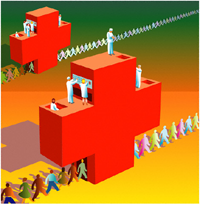 As outlined in the previous Artifact section of this paper, nurses have worked within a technologically demanding environment right from the beginning. The notion of technology as neutral tool and background within nursing is a long standing one. The only difference is the configuration of the tool: contemporary information technologies are just another huge but logical step in the progressive evolution of technologies within health care and society at large. But this commonness and history do not make the notion of technology as tool any more acceptable – at least not without question. It is important that nurses consider this lens and analyze the ramifications of unquestioningly applying technology to their practice. An understanding of the influence of this modernist stance is important to nurses and other disciplines in order to make technological decisions and design new software with both awareness and deliberateness. As outlined in the previous Artifact section of this paper, nurses have worked within a technologically demanding environment right from the beginning. The notion of technology as neutral tool and background within nursing is a long standing one. The only difference is the configuration of the tool: contemporary information technologies are just another huge but logical step in the progressive evolution of technologies within health care and society at large. But this commonness and history do not make the notion of technology as tool any more acceptable – at least not without question. It is important that nurses consider this lens and analyze the ramifications of unquestioningly applying technology to their practice. An understanding of the influence of this modernist stance is important to nurses and other disciplines in order to make technological decisions and design new software with both awareness and deliberateness.
Modernist Situatedness
 The foundation for promoting this perspective of technology is essentially to enable the robust vitality of the organizational system. Thus, the technology that is selected is usually done using criteria set by the organization, not according to the needs of the users, in this case, nurses. Often, the rationale for choosing a system is based on efficiency and continuous improvement (Cowley, Daws & Ellis, 2003). The decision makers view the biggest threats to the efficiency of this system as noncompliance or error in the users, and malfunction of the system itself. The focus is on control of the system through standardization and accessibility, sometimes summarized as flexibility of the system. “By a hermeneutical design of computer programs, some possible breakdown situations can be implemented in order to help the user when something goes wrong with the normal functioning of the system. In other words, the flexibility of the system depends on its capacity for anticipating such situations, i.e., on its capacity to remain a tool” (Capurro, 1992, p. 2). The foundation for promoting this perspective of technology is essentially to enable the robust vitality of the organizational system. Thus, the technology that is selected is usually done using criteria set by the organization, not according to the needs of the users, in this case, nurses. Often, the rationale for choosing a system is based on efficiency and continuous improvement (Cowley, Daws & Ellis, 2003). The decision makers view the biggest threats to the efficiency of this system as noncompliance or error in the users, and malfunction of the system itself. The focus is on control of the system through standardization and accessibility, sometimes summarized as flexibility of the system. “By a hermeneutical design of computer programs, some possible breakdown situations can be implemented in order to help the user when something goes wrong with the normal functioning of the system. In other words, the flexibility of the system depends on its capacity for anticipating such situations, i.e., on its capacity to remain a tool” (Capurro, 1992, p. 2).
Where does this modernist organizational 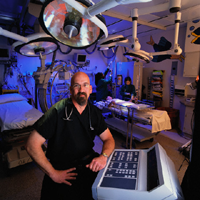 management approach to technology situate nurses? The information system selected by those in the higher echelons is situated within the centre of the system to supposedly serve as benign tools and support everyday nursing practice. This model places nurses as supportive structures themselves within this mass of technological interconnectedness. Nurses do not often determine which system is used, or what functions it should support, which in essence, makes them a target of this tool perspective. So, are nurses the masters of the tools, or are they part of the tool structure themselves? Do tool and master (or mistress) become mere reflections of each other? Or, at the least, do they manifest as intertwined tools of the system? management approach to technology situate nurses? The information system selected by those in the higher echelons is situated within the centre of the system to supposedly serve as benign tools and support everyday nursing practice. This model places nurses as supportive structures themselves within this mass of technological interconnectedness. Nurses do not often determine which system is used, or what functions it should support, which in essence, makes them a target of this tool perspective. So, are nurses the masters of the tools, or are they part of the tool structure themselves? Do tool and master (or mistress) become mere reflections of each other? Or, at the least, do they manifest as intertwined tools of the system?
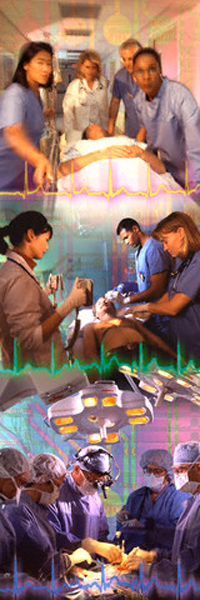 Answers to these questions are not clearly visible in the modernist literature. Instead, this view of technology as tool is perpetuated as the solution to the ills of the modern health care system and its obvious deficiencies. “Harnessing the power of modern information and communication technologies (ICTs) to health care entails such innovative applications as electronic health records (EHRs), telemedicine, telehomecare, and Internet-based information for the health care professional and consumers alike. These applications are emerging as an enabling feature of national importance for transforming the Canadian health system in the 21st century and contributing to Canadians' health. They can significantly improve the accessibility and quality of health services for all Canadians, while increasing efficiency of the health system” (Canadian Nurses Association & Office of Health and the Information Highway, 2000, p.4). Answers to these questions are not clearly visible in the modernist literature. Instead, this view of technology as tool is perpetuated as the solution to the ills of the modern health care system and its obvious deficiencies. “Harnessing the power of modern information and communication technologies (ICTs) to health care entails such innovative applications as electronic health records (EHRs), telemedicine, telehomecare, and Internet-based information for the health care professional and consumers alike. These applications are emerging as an enabling feature of national importance for transforming the Canadian health system in the 21st century and contributing to Canadians' health. They can significantly improve the accessibility and quality of health services for all Canadians, while increasing efficiency of the health system” (Canadian Nurses Association & Office of Health and the Information Highway, 2000, p.4).
In fact, this modernist notion is lauded as the way to achieve clinical transformation within nursing and the health care system at large. “The concept of clinical transformation is developed with new models of care delivery being supported by technology rather than driving care delivery. Clinical transformation is clinical and nonclinical process improvement supported by technology, not driven by it” (Smith, 2004, p. 92). This promise of transformation is often used as an effective way to convince nurses that information technology should be unquestioningly and seamlessly accepted into nursing practice, often, in the way that it is currently being implemented: through top-down approaches. As nurses open to the inevitability of ICTs in nursing practice, they often accept this appeal – that technological tools can help them achieve their own disciplinary mandates. “They see ICTs as strong supports in a shift from an illness model of health care to a focus on health promotion and illness prevention. Canadian registered nurses have long advocated for this focus” (Canadian Nurses Association & Office of Health and the Information Highway, 2000, p.7).
This longstanding modernist notion of technology as tools in nursing is so common that most nurses accept it without consideration or question. This perspective has also helped to shape a more recent perspective of information technology as “technique”, one where the inclusion of informatics in the workplace can help nurses achieve best practices, embrace evidence-based practice, and truly operate in their day to day world as efficient and effective health professionals within the context of health practice.
|
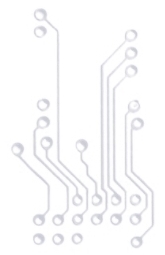
|




 Another very common conception of technology, including information technology is founded in modernism: the notion that computers and machines used in nursing practice are simply tools that nurses control within their practice. This reflection is very common in the nursing literature, usually embedded within an organizational culture or management framework, to support the use of technologies in a utilitarian manner. “Technology is conceived as socially, culturally, and morally neutral – is conceived as amoral (amoral in the sense of having no value of moral consideration) – is nothing more than a resource to be used by nurses” (Barnard, 1997, p. 127). Supporters of this perspective question why information technology is not used more in nursing since it is, after all, a benign tool that can make nursing work easier, less redundant and repetitive, and more congruent with contemporary trends. “Nursing remains under the ever-pressing demand to do more with less. Yet, our profession only sparingly implements incredible technological advances that have streamlined other industries. Why haven't we capitalized on these phenomenal resources?” (Bartholomew & Curtis, 2004, p. 48).
Another very common conception of technology, including information technology is founded in modernism: the notion that computers and machines used in nursing practice are simply tools that nurses control within their practice. This reflection is very common in the nursing literature, usually embedded within an organizational culture or management framework, to support the use of technologies in a utilitarian manner. “Technology is conceived as socially, culturally, and morally neutral – is conceived as amoral (amoral in the sense of having no value of moral consideration) – is nothing more than a resource to be used by nurses” (Barnard, 1997, p. 127). Supporters of this perspective question why information technology is not used more in nursing since it is, after all, a benign tool that can make nursing work easier, less redundant and repetitive, and more congruent with contemporary trends. “Nursing remains under the ever-pressing demand to do more with less. Yet, our profession only sparingly implements incredible technological advances that have streamlined other industries. Why haven't we capitalized on these phenomenal resources?” (Bartholomew & Curtis, 2004, p. 48).
 This utility-focused view of informatics and technology in nursing can be seen as a deterministic, decidedly neutral (at least on the surface) lens to view the applications of computers and ICTs within the context of nursing care. “Nurses in all specialties are required to care for patients and develop the technical knowledge not only to manipulate machinery but interpret the world around them. Overall, the literature remains deterministic (both utopian and dystopian) and favors an uncritical approach to technology in which the phenomenon is understood to be little more than machinery and tools. Determinism seeks to explain phenomena in terms of one principle or determining factor” (Barnard, 1997, p. 126).
This utility-focused view of informatics and technology in nursing can be seen as a deterministic, decidedly neutral (at least on the surface) lens to view the applications of computers and ICTs within the context of nursing care. “Nurses in all specialties are required to care for patients and develop the technical knowledge not only to manipulate machinery but interpret the world around them. Overall, the literature remains deterministic (both utopian and dystopian) and favors an uncritical approach to technology in which the phenomenon is understood to be little more than machinery and tools. Determinism seeks to explain phenomena in terms of one principle or determining factor” (Barnard, 1997, p. 126). “One belief influencing the reason why nurses uncritically accept and interpret technology centers on the notion that technology is a neutral object – a view that machines do not make decisions, they only solve problems” (Barnard, 1997, p. 127). This belief in technology's neutrality emphasizes the premise of human control over machines and apparatus that are simply responsive to the manipulation, preferences, decisions, and direction of the people who use them.
“One belief influencing the reason why nurses uncritically accept and interpret technology centers on the notion that technology is a neutral object – a view that machines do not make decisions, they only solve problems” (Barnard, 1997, p. 127). This belief in technology's neutrality emphasizes the premise of human control over machines and apparatus that are simply responsive to the manipulation, preferences, decisions, and direction of the people who use them.  This view of nursing as master over technology is not a new one: it emerged as a result of the nineteenth century dominant sociological paradigm of the human right to dominate and master nature, and what humans fashion from nature, to meet their own needs and rationale. The key actions within this perspective are domination and mastery: in this case, reflected as nurses dominating and mastering information technology, and technology in general. “The neutral belief suggests there is nothing intrinsic to technology or the circumstances of its emergence which predetermines how it is used and controlled, or how the effects of technology will manifest upon individuals, groups, or the political forms around us” (Barnard, 1997, p. 127).
This view of nursing as master over technology is not a new one: it emerged as a result of the nineteenth century dominant sociological paradigm of the human right to dominate and master nature, and what humans fashion from nature, to meet their own needs and rationale. The key actions within this perspective are domination and mastery: in this case, reflected as nurses dominating and mastering information technology, and technology in general. “The neutral belief suggests there is nothing intrinsic to technology or the circumstances of its emergence which predetermines how it is used and controlled, or how the effects of technology will manifest upon individuals, groups, or the political forms around us” (Barnard, 1997, p. 127).  This notion supports the need for “high touch” nursing care combined with “high tech” abilities in order to demonstrate true caring to their clients. But this utility-based perspective downplays the influence of the technology on both nurses and clients, promoting the view that this is machinery after all – sophisticated perhaps, but nevertheless, mere tools that can support nurses in giving optimal nursing care within the confines of the bureaucratic health system (Locsin, 1999). “Nurses are characterized as capable of transcending bias, politics, economics, disinterest, and even disenfranchisement, to influence adequately the use of technology” (Barnard, 1997, p. 128).
This notion supports the need for “high touch” nursing care combined with “high tech” abilities in order to demonstrate true caring to their clients. But this utility-based perspective downplays the influence of the technology on both nurses and clients, promoting the view that this is machinery after all – sophisticated perhaps, but nevertheless, mere tools that can support nurses in giving optimal nursing care within the confines of the bureaucratic health system (Locsin, 1999). “Nurses are characterized as capable of transcending bias, politics, economics, disinterest, and even disenfranchisement, to influence adequately the use of technology” (Barnard, 1997, p. 128).  One of the most common arguments to support this perspective of utility, is the positive effect that information technology has on nurses' ability to attend to documentation in a more timely and less redundant manner. Nursing and hospital information systems are promoted as benign, efficient software that can save time, repetitive charting, and make the nurses' documentation easily available to physicians, other nurses, and the entire interdisciplinary team at
One of the most common arguments to support this perspective of utility, is the positive effect that information technology has on nurses' ability to attend to documentation in a more timely and less redundant manner. Nursing and hospital information systems are promoted as benign, efficient software that can save time, repetitive charting, and make the nurses' documentation easily available to physicians, other nurses, and the entire interdisciplinary team at the click of a button. “Studies estimate that nurses spend as little as 15 percent of their time on direct patient care. As much as half goes to documentation. One welcome outcome expected of the many IT initiatives under way is revitalization and redefinition of the role of nurses and the nursing practice. Clinical documentation is an area where IT can have a major influence. As they help coordinate all the multifaceted activities related to patients, nurses must ensure that every aspect of diagnosis and care is carefully documented.
the click of a button. “Studies estimate that nurses spend as little as 15 percent of their time on direct patient care. As much as half goes to documentation. One welcome outcome expected of the many IT initiatives under way is revitalization and redefinition of the role of nurses and the nursing practice. Clinical documentation is an area where IT can have a major influence. As they help coordinate all the multifaceted activities related to patients, nurses must ensure that every aspect of diagnosis and care is carefully documented.  Documentation poses a tremendous, often unmanageable, challenge and has become the root cause of many patient safety and other problems” (Ball, 2005, p. 1). It is obvious that nurses spend a lot of time recording their observations and other measured data – and that this data is critical to the smooth functioning of the modernist health care system (Jiang, Chen & Chen, 2004). Yet, despite the surface presentation of this benign technology as tool, it is also obvious that nurses must adhere to very structured guidelines in order to enter and analyze the inputted data perfectly, without error.
Documentation poses a tremendous, often unmanageable, challenge and has become the root cause of many patient safety and other problems” (Ball, 2005, p. 1). It is obvious that nurses spend a lot of time recording their observations and other measured data – and that this data is critical to the smooth functioning of the modernist health care system (Jiang, Chen & Chen, 2004). Yet, despite the surface presentation of this benign technology as tool, it is also obvious that nurses must adhere to very structured guidelines in order to enter and analyze the inputted data perfectly, without error.
 typical nursing information system does not seem very realistic. A tension arises, which can be perceived as ambiguity. “This ambiguity is... a key issue with regard to software development, since software is not just a tool, but a specific form of reality disclosure and transformation. The question is, then: what kind of reality are we constructing when we develop software, and what are the limits and chances of such a form of reality construction?” (Capurro, 1992, p. 3).
typical nursing information system does not seem very realistic. A tension arises, which can be perceived as ambiguity. “This ambiguity is... a key issue with regard to software development, since software is not just a tool, but a specific form of reality disclosure and transformation. The question is, then: what kind of reality are we constructing when we develop software, and what are the limits and chances of such a form of reality construction?” (Capurro, 1992, p. 3).
 One question that arises is, do nurses control these benign information technology tools, or do the “tools” shape the activities, decisions, and attention of the nurses as users of technology? Much of the modernist literature encourages the tool myth by linking the effects of using information technology in nursing with both caring as previously mentioned, but also with safety and client support (Locsin, 1999; Simpson, 1994; Kling, 2000b; Smith, 2004).
One question that arises is, do nurses control these benign information technology tools, or do the “tools” shape the activities, decisions, and attention of the nurses as users of technology? Much of the modernist literature encourages the tool myth by linking the effects of using information technology in nursing with both caring as previously mentioned, but also with safety and client support (Locsin, 1999; Simpson, 1994; Kling, 2000b; Smith, 2004).  Technology becomes an overarching symbol of the means (as a benign tool) to serve nursing's mandate to provide meaningful caring practice, to uphold the structure and schedule of the health organization, and to do so without error or negligence. “Technology, and the data it provides, can help nursing improve care in three ways: a) by counteracting human error, b) by improving human behavior, and c) by putting nurses where they can be most effective. Technology does this in two ways: with software that translates data into information and with hardware that improves the way nurses collect that data. Technology can help cultivate caring by providing the data healthcare organizations need to understand how and why errors occur to prevent them from doing so” (Simpson, 2004, p. 303).
Technology becomes an overarching symbol of the means (as a benign tool) to serve nursing's mandate to provide meaningful caring practice, to uphold the structure and schedule of the health organization, and to do so without error or negligence. “Technology, and the data it provides, can help nursing improve care in three ways: a) by counteracting human error, b) by improving human behavior, and c) by putting nurses where they can be most effective. Technology does this in two ways: with software that translates data into information and with hardware that improves the way nurses collect that data. Technology can help cultivate caring by providing the data healthcare organizations need to understand how and why errors occur to prevent them from doing so” (Simpson, 2004, p. 303).  As outlined in the previous Artifact section of this paper, nurses have worked within a technologically demanding environment right from the beginning. The notion of technology as neutral tool and background within nursing is a long standing one. The only difference is the configuration of the tool: contemporary information technologies are just another huge but logical step in the progressive evolution of technologies within health care and society at large. But this commonness and history do not make the notion of technology as tool any more acceptable – at least not without question. It is important that nurses consider this lens and analyze the ramifications of unquestioningly applying technology to their practice. An understanding of the influence of this modernist stance is important to nurses and other disciplines in order to make technological decisions and design new software with both awareness and deliberateness.
As outlined in the previous Artifact section of this paper, nurses have worked within a technologically demanding environment right from the beginning. The notion of technology as neutral tool and background within nursing is a long standing one. The only difference is the configuration of the tool: contemporary information technologies are just another huge but logical step in the progressive evolution of technologies within health care and society at large. But this commonness and history do not make the notion of technology as tool any more acceptable – at least not without question. It is important that nurses consider this lens and analyze the ramifications of unquestioningly applying technology to their practice. An understanding of the influence of this modernist stance is important to nurses and other disciplines in order to make technological decisions and design new software with both awareness and deliberateness.
 The foundation for promoting this perspective of technology is essentially to enable the robust vitality of the organizational system. Thus, the technology that is selected is usually done using criteria set by the organization, not according to the needs of the users, in this case, nurses. Often, the rationale for choosing a system is based on efficiency and continuous improvement (Cowley, Daws & Ellis, 2003). The decision makers view the biggest threats to the efficiency of this system as noncompliance or error in the users, and malfunction of the system itself. The focus is on control of the system through standardization and accessibility, sometimes summarized as flexibility of the system. “By a hermeneutical design of computer programs, some possible breakdown situations can be implemented in order to help the user when something goes wrong with the normal functioning of the system. In other words, the flexibility of the system depends on its capacity for anticipating such situations, i.e., on its capacity to remain a tool” (Capurro, 1992, p. 2).
The foundation for promoting this perspective of technology is essentially to enable the robust vitality of the organizational system. Thus, the technology that is selected is usually done using criteria set by the organization, not according to the needs of the users, in this case, nurses. Often, the rationale for choosing a system is based on efficiency and continuous improvement (Cowley, Daws & Ellis, 2003). The decision makers view the biggest threats to the efficiency of this system as noncompliance or error in the users, and malfunction of the system itself. The focus is on control of the system through standardization and accessibility, sometimes summarized as flexibility of the system. “By a hermeneutical design of computer programs, some possible breakdown situations can be implemented in order to help the user when something goes wrong with the normal functioning of the system. In other words, the flexibility of the system depends on its capacity for anticipating such situations, i.e., on its capacity to remain a tool” (Capurro, 1992, p. 2). management approach to technology situate nurses? The information system selected by those in the higher echelons is situated within the centre of the system to supposedly serve as benign tools and support everyday nursing practice. This model places nurses as supportive structures themselves within this mass of technological interconnectedness. Nurses do not often determine which system is used, or what functions it should support, which in essence, makes them a target of this tool perspective. So, are nurses the masters of the tools, or are they part of the tool structure themselves? Do tool and master (or mistress) become mere reflections of each other? Or, at the least, do they manifest as intertwined tools of the system?
management approach to technology situate nurses? The information system selected by those in the higher echelons is situated within the centre of the system to supposedly serve as benign tools and support everyday nursing practice. This model places nurses as supportive structures themselves within this mass of technological interconnectedness. Nurses do not often determine which system is used, or what functions it should support, which in essence, makes them a target of this tool perspective. So, are nurses the masters of the tools, or are they part of the tool structure themselves? Do tool and master (or mistress) become mere reflections of each other? Or, at the least, do they manifest as intertwined tools of the system?  Answers to these questions are not clearly visible in the modernist literature. Instead, this view of technology as tool is perpetuated as the solution to the ills of the modern health care system and its obvious deficiencies. “Harnessing the power of modern information and communication technologies (ICTs) to health care entails such innovative applications as electronic health records (EHRs), telemedicine, telehomecare, and Internet-based information for the health care professional and consumers alike. These applications are emerging as an enabling feature of national importance for transforming the Canadian health system in the 21st century and contributing to Canadians' health. They can significantly improve the accessibility and quality of health services for all Canadians, while increasing efficiency of the health system” (Canadian Nurses Association & Office of Health and the Information Highway, 2000, p.4).
Answers to these questions are not clearly visible in the modernist literature. Instead, this view of technology as tool is perpetuated as the solution to the ills of the modern health care system and its obvious deficiencies. “Harnessing the power of modern information and communication technologies (ICTs) to health care entails such innovative applications as electronic health records (EHRs), telemedicine, telehomecare, and Internet-based information for the health care professional and consumers alike. These applications are emerging as an enabling feature of national importance for transforming the Canadian health system in the 21st century and contributing to Canadians' health. They can significantly improve the accessibility and quality of health services for all Canadians, while increasing efficiency of the health system” (Canadian Nurses Association & Office of Health and the Information Highway, 2000, p.4).